
views
Dying Fresh Flowers with Food Color
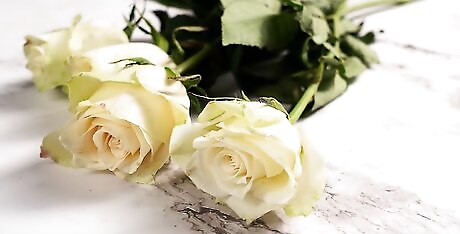
Choose your blooms. The process of dying fresh flowers involves adding a color to water, and waiting for the flowers to absorb it. The dye will be absorbed by your flowers so it's best to choose light-colored flowers. Popular choices include roses, daisies, orchids, mums, and Queen Anne's lace but you can try any pale colored flower.

Choose your colors. Decide what colors you want. If using a liquid food color you can blend the colors to get what you want. Typically, food color sets come with yellow, red, green, and blue, but you can mix these to create other colors. Alternatively, you can use powdered floral absorption dyes.
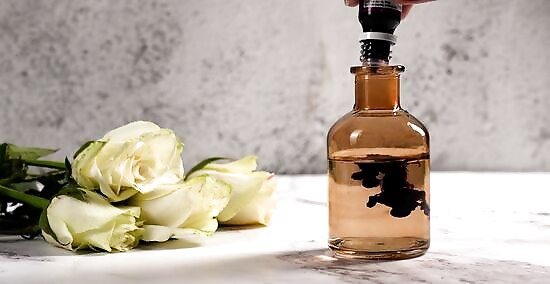
Prepare your colored water. Fill a vase with enough warm water to submerse the stems. Add flower food and dye to the water. There is no right or wrong way to add the dye; the more dye you add, the more vibrant the color of the flowers will be, the less dye, the more subdued the color.
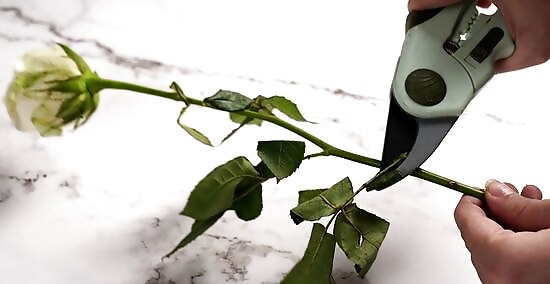
Prepare your flowers. Before putting your flowers in the dyed water, you’ll need to cut the stems. Use a pair of gardening shears or sharp scissors to cut an inch or two off the stem 1–2 inches (2.5–5.1 cm) at a 45-degree angle. At this time, remove any extra leaves that you don't want. This will allow for optimal water absorption, expediting the overall time it takes your flowers to change color. After picking your flowers you can leave them sitting out without water for a couple of hours. They will get thirsty and once you cut the stems and put them in your dye solution they will absorb the color pretty quick.
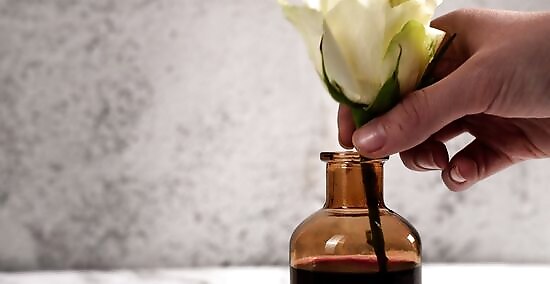
Place your flowers in the water and wait. Put your bouquet of flowers in the prepared vase. The color won’t show up in the flower petals immediately, but it won't be long. Depending on the flower it could take 1 to 6 hours for them to be nicely dyed. The longer you leave the flowers, the more intense the color will be.
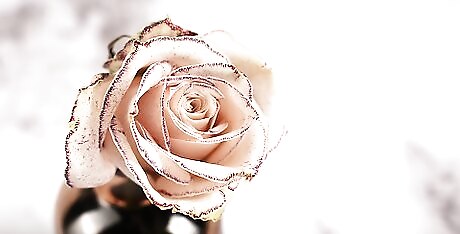
Remove your flowers from the dye solution. Re-cut the stems and put them in a vase with fresh warm water and flower food. To keep the flowers looking fresh, you should put new water in the vase at least every other day, adding fresh flower food each time. The color will remain in the flowers until they eventually wilt and die.
Dip-Dying Fresh Flowers
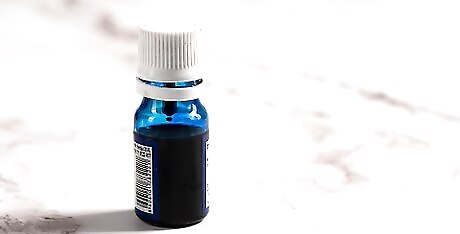
Purchase floral dip-dye. For dip dying fresh flowers, you’ll need to use specialty florist dip dye. This is available online and from some wholesale florists. Your florist can order this for you. Typically, these dyes come in ten colors, but you can easily mix dyes to get the right color.

Select your flowers. Because you’ll be coating the outside of the flower petals with dye instead of having them absorb it, you can use nearly any color and species of flower. Dip dye isn’t totally opaque though, so keep in mind that white/pale flowers will have a bright, bold hue while darker colored flowers will end up a rich, dark hue. Choose flowers that are fully in bloom, so that each of the petals will have easy access to the dye. You can create very dark flowers by using dark blooms to start; red flowers dipped in purple dye will end up a dark plum color, for example.
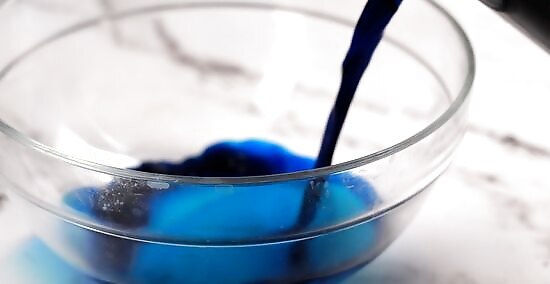
Prepare your dye. Pour your dye into a bowl or small bucket – any container with a wide brim will work. For a more subdued color, add Isopropyl alcohol to your dye mix. Place newspaper or a drop cloth under the container, to prevent splatters and drops from staining your workspace.
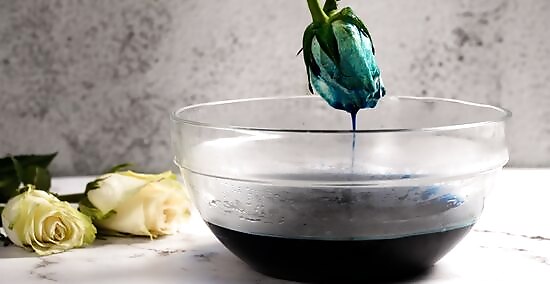
Dip your flowers in the dye. Hold a single bloom upside-down at the end of the stem, so that the bud is facing down. Lower the flower into the dye, and hold it in the dye for a few seconds, making sure that every petal is exposed to the dye. Then, lift the flower out of the dye, and rinse it in fresh water. Avoid shaking the freshly dyed flower or you'll end up with dye stains on yourself and your work area that won't come out.
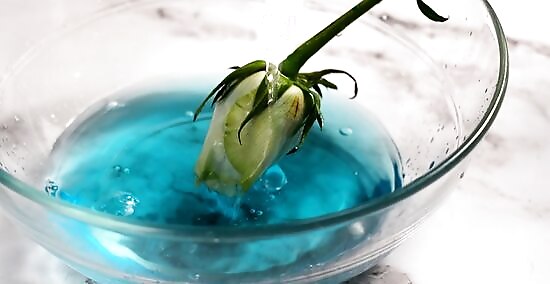
Put the flowers in a vase of warm water and flower food. Put the vase out of the way on a protected surface until they are dry to touch. It is important that you let the flowers dry completely before handling them, otherwise the dye will transfer from the flowers to your hands, clothes, and furniture, causing a stain.
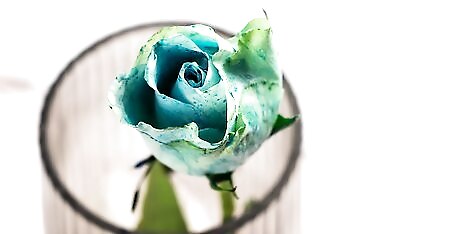
Repeat the process. Follow the aforementioned steps for each of the flowers in your bunch, until they have all been dyed. If the flowers aren’t as dark/bright as you had hoped for, you can dip them a second time and let them dry for a bolder hue.
Using Spray Dye for Fresh and Dried Flowers

Purchase floral spray dye. Floral spray dye is very similar to spray paint, except that it is made so that it won’t kill fresh flowers and adheres to flower petals. Floral spray dye (or floral spray paint) comes in a variety of colors, and is safe to use on both fresh and dried flowers. Keep in mind that it can get quite messy, spray painting a bouquet of flowers.
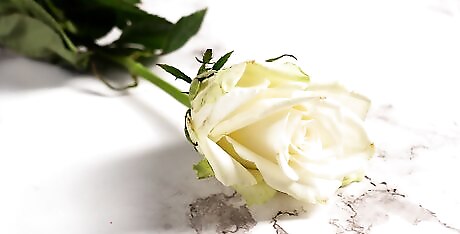
Choose your flowers. Spray dye is opaque when applied, and will completely cover the color of the flower petals underneath. As a result, you can use any color, shape, or species of flower you want.
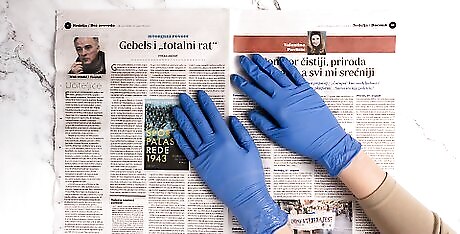
Set up your workspace. Using spray dye is messy business, so it is important that you set up a special work area to do it in. Move into a well-ventilated space – like your garage or driveway – and put down a drop cloth or newspapers. Put on rubber gloves and old clothes that you don’t mind getting a bit dirty and stained.
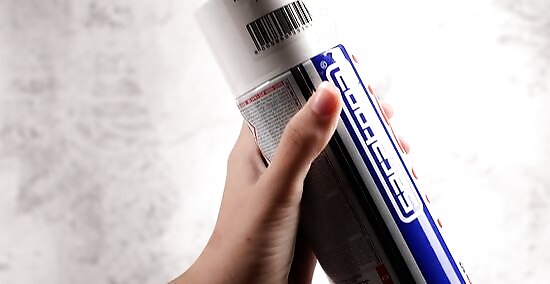
Prepare the spray dye. With the lid still on, shake the can of spray dye well for 20-30 seconds. Remove the cap and turn the nozzle so that the black dot is aligned with the direction you want to spray.
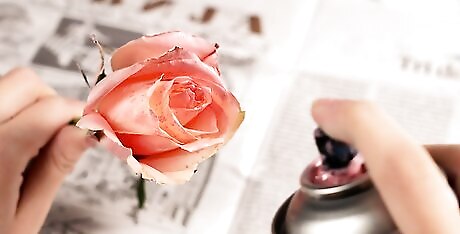
Spray your flowers. Hold each flower up individually, so that the bud is facing away from you. With your other hand, hold the can of spray dye 15–18 inches (38.1–45.7 cm) away from the flower bud. Hold down the nozzle to release the dye, turning the flower as you do so to spray it evenly. Spray the flower until it is completely covered with an even coat of paint.
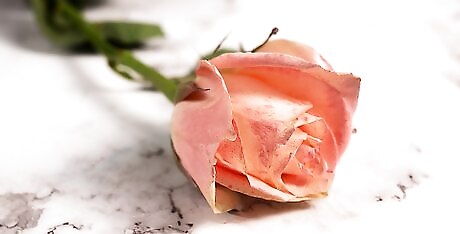
Set the flower aside to dry. Put the freshly painted flower into a vase or other container that holds it upright. The dye will take 1-3 hours to dry depending on the temperature and humidity. Don’t touch the flowers until they are completely dried, or else the dye will rub off onto your hands and clothes. Put the flowers in a warm, dry room to help them dry faster.

Repeat this process on the remaining flowers. Continue working through your bouquet, spraying each flower individually and then putting it in a vase to dry. You can add multiple coats of the dye to the flowers if you aren’t happy with the density or brightness of the color.
Using Fabric Dye on Dried Flowers

Choose your fabric dye. Fabric dye will successfully dye any type of flower, but because it involves boiling water and harsh chemicals, it will ruin fresh flowers. If, however, you have dried flowers that you are wanting to brighten up, you can use fabric dye to accomplish the task. Select any powder or liquid fabric dye; they all typically use the same process of mixing the dye with boiling water. Keep in mind that you can choose how light or dark your flowers will be based on how long you leave them in the dye.
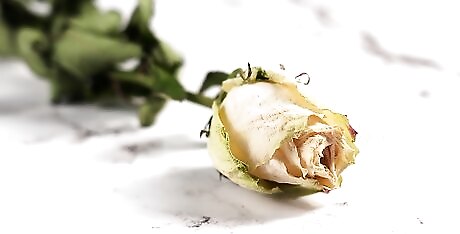
Select your dried flowers. Flowers that are dyed tend to brown, making them a bit more difficult to dye. As a result, you should look for light-hued flowers, as dark color flowers will be too dark to dye effectively. White, cream, and light blue flowers are the best for this. Popular dried flowers include hydrangeas, baby’s breath, and roses. Keep in mind that your flowers need to have been fully dried for at least 2 weeks prior to dying them. Avoid flowers that are damaged or discolored, as this will still show even when dyed.
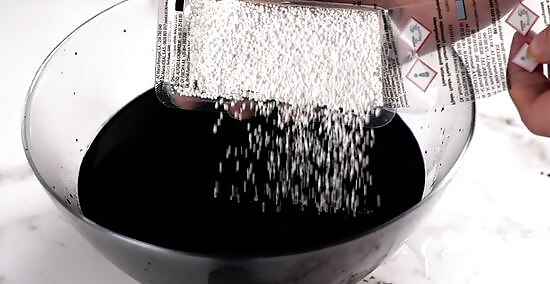
Prepare your dye. Each brand of dye will differ slightly in terms of instructions, but will involve mixing the packaged dye with a proportional amount of boiling water. While the dye is boiling, set up drop cloths or newspaper in the work area to avoid getting dye on your clothes or countertop.
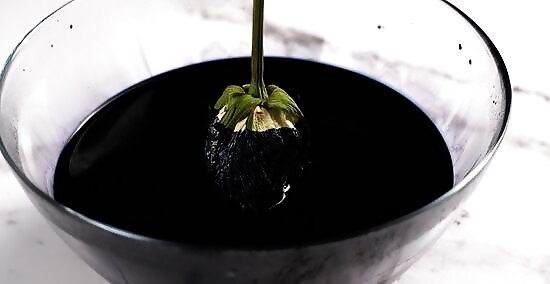
Dip each flower into the dye. Hold a single dried flower by the stem so the bloom is pointed downwards. Slowly dip the flower into the dye, and hold it for 5-10 seconds. Pull it out and examine the color; if you’re happy with the hue, remove it completely. Otherwise, put the flower back in the dye until you reach the desired color, checking frequently.
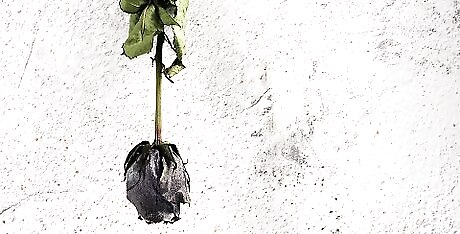
Hang the flowers to dry. Using a clothesline or a drying rack, hang each of your flowers upside down to dry completely. Put them in a warm, dry room for the fastest drying time; leave them for at least 24 hours before using them as decorations.
Dying Silk Flowers
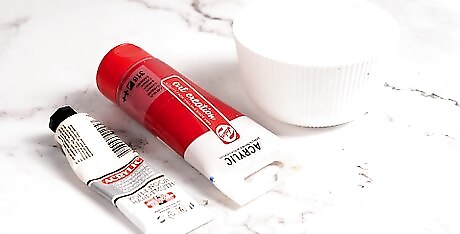
Gather your supplies. Silk flowers cannot be dyed using fabric dye, because the fabric cannot be boiled. Although you can attempt using food coloring, it will likely rinse off the fabric because it is not permanent. The most success has come from dying silk flowers with acrylic paint. Therefore, you will need a tube of acrylic paint in a color of your choice, a container of gel medium, and water.
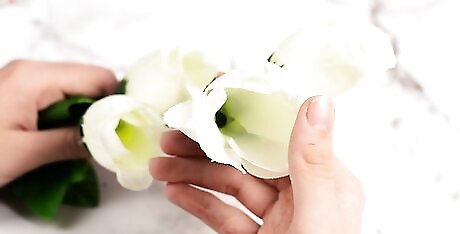
Prepare your flowers. Depending on the type of silk flower you use, you may need to prepare them a bit. If your flower has a stamen in the center, you’ll need to use painters tape to block it off in order to prevent it from being dyed. Anything else you don’t want colored should be blocked off with painters tape as well.
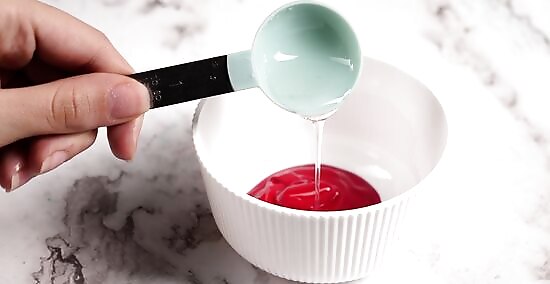
Make your acrylic dye. To make the dye for your silk flowers, mix 2 parts acrylic paint with 1 part gel medium, Use a stir stick or spoon to fully incorporate this, and then add a small amount of water to thin it down. The amount of water you add to the mixture is dependent on how bright you want the dye to be; the more water you add, the paler the final color. When you’re done, put the dye in a wide-brimmed bowl or container, and place newspapers around it to prevent leaks.
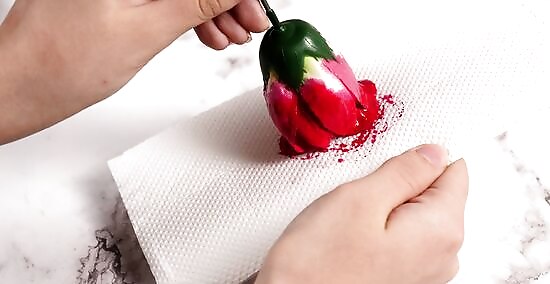
Dye your flowers. Place a single flower in the dye, and hold it so that it is completely covered in the color. Carefully lift it out of the dye using the stem or tweezers (if there is no stem), and place it onto the newspapers. Use a paper towel to pat the flower and remove the excess dye. Then, leave the flower to dry on the newspaper for 2-3 hours.
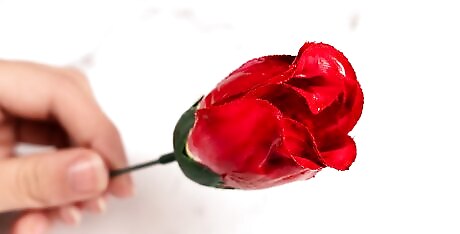
Repeat the process. Work through all your flowers, dying them using the aforementioned methods. After they have dried for about 3 hours, remove any painters tape you might have applied.
















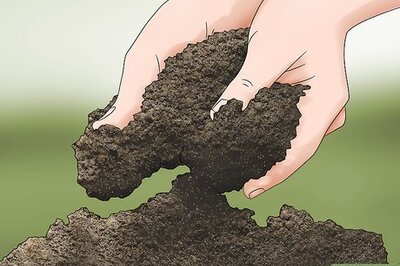

Comments
0 comment